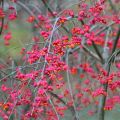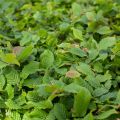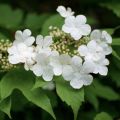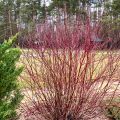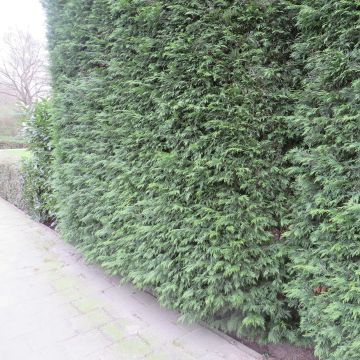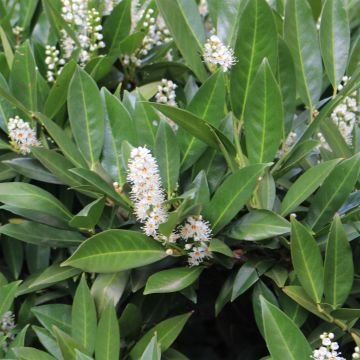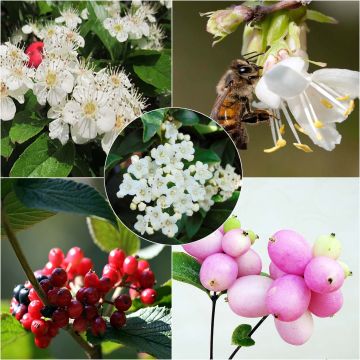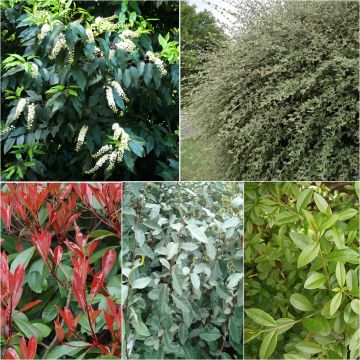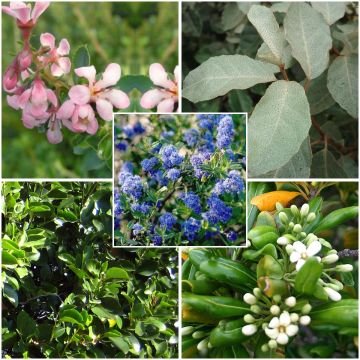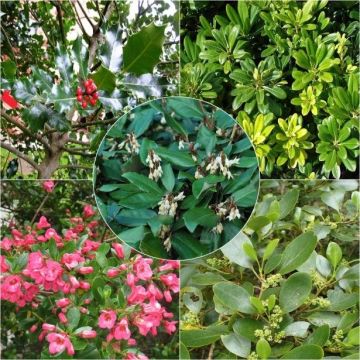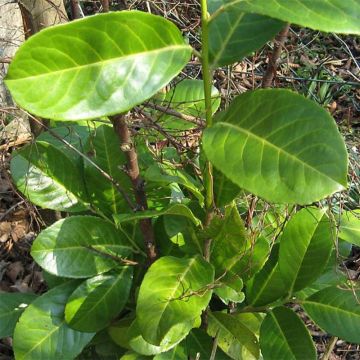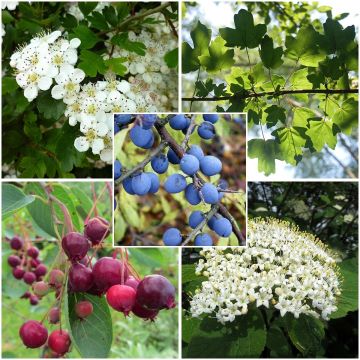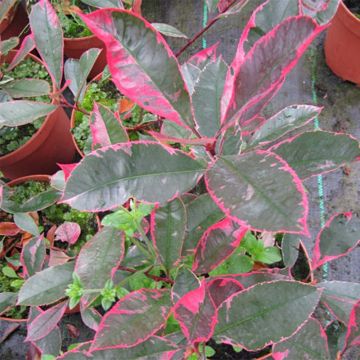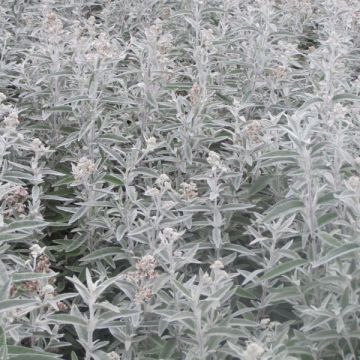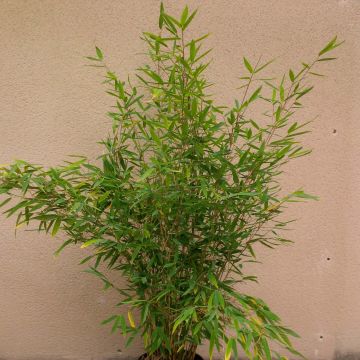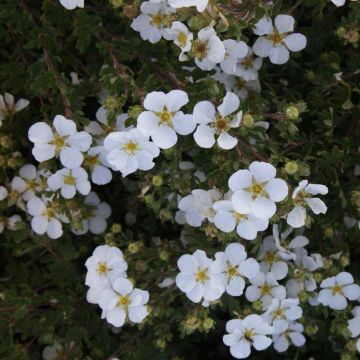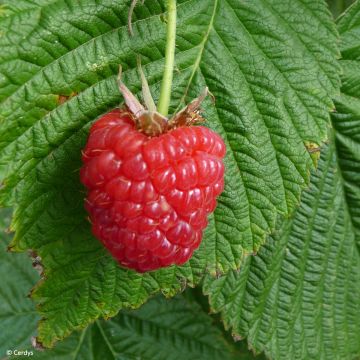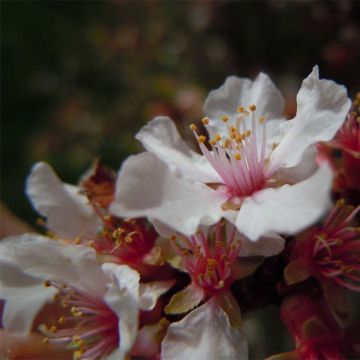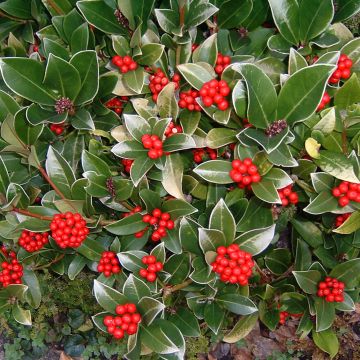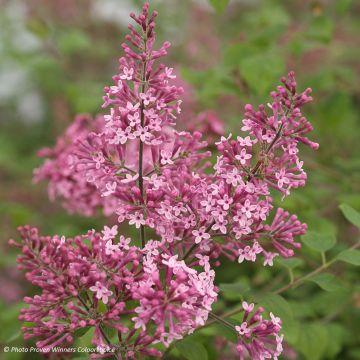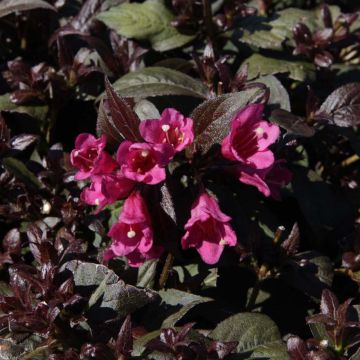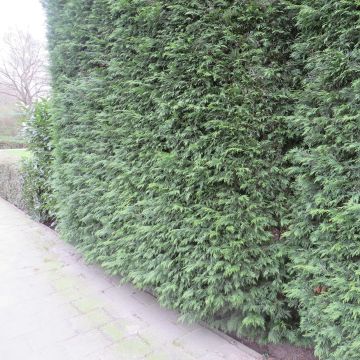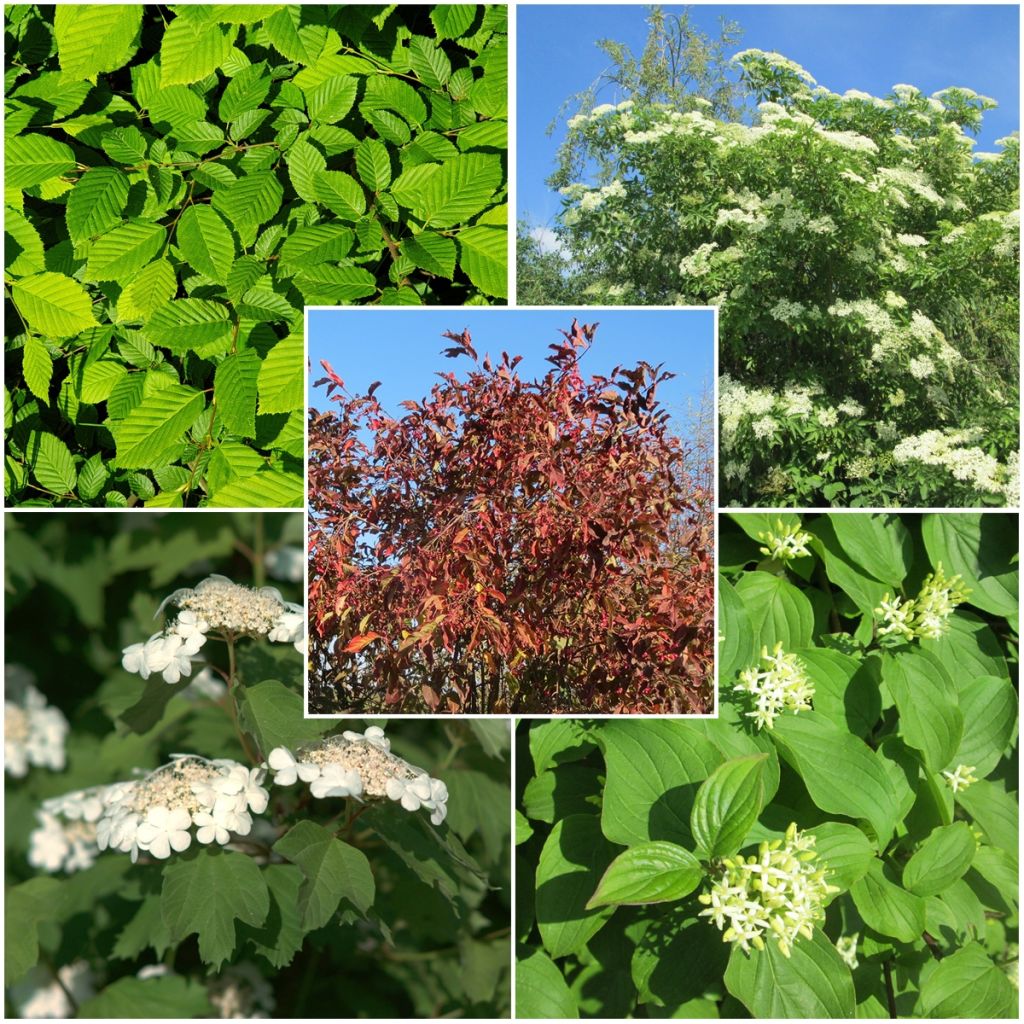

Regional hedge for Ile-de-France, Normandy, and Hauts-de-France in a 5m (16ft) kit.
Regional hedge for Ile-de-France, Normandy, and Hauts-de-France in a 5m (16ft) kit.
This plant carries a 24 months recovery warranty
More information
We guarantee the quality of our plants for a full growing cycle, and will replace at our expense any plant that fails to recover under normal climatic and planting conditions.
From €5.90 for pickup delivery and €6.90 for home delivery
Express home delivery from €8.90.
Does this plant fit my garden?
Set up your Plantfit profile →
Collection items (5 plants)
Description
You can create a regional hedge for Île-de-France, Normandy and Hauts-de-France with this kit composed of 5 different deciduous shrub varieties. In these northern regions, the climate is semi-temperate, neither scorching in summer nor freezing in winter, with rainfall spread throughout the year. The soils are rich and deep, often clayey, with a tendency towards neutral to acidic. These moist, even waterlogged, soils in winter will retain moisture even in summer. The species that are adapted to this area have a preference for heavy, non-calcareous soils and can withstand periods of frost, even strong ones. This kit allows you to create a small hedge, 5 metres (16 feet) in length, well suited for a moderately sized garden.
The kit consists of:
- 1 Black elderberry - Sambucus nigra. A large shrub or small deciduous tree that grows rapidly, with an open habit and often shoots from the stump, which will reach 6 metres (20 feet) in all directions if not pruned. It has large leaves that fall in autumn and blooms from May to June. Its wide, flat inflorescences are a bright cream color and are nectar-rich, and fragrant. Its black berries are edible once cooked, but also highly appreciated by birds.
- 1 European spindle tree - Euonymus europaeus. This native deciduous shrub is 3 metres (10 feet) high by 2 metres (7 feet) wide and is highly decorative in autumn. Its green leaves turn beautiful fiery colors in October, mixing red and pink with shades of purple. The spring flowering is discreet, but it is followed by the formation of remarkably colorful fruits in orange and fuchsia pink, very visible on the leafless branches at the end of the season. Hardy and tolerant of pruning, it will adapt anywhere.
- 1 Hornbeam - Carpinus betulus. A very robust native tree with slow growth and a pyramidal habit that becomes rounded over time. At maturity, it can theoretically reach 25 metres (82 feet) in height, but regular pruning will keep it at much more reasonable dimensions. The hornbeam's light green foliage turns beautiful yellow-orange shades in autumn. It is marcescent: the leaves do not fall, they remain attached until the new ones appear. The flowering is discreet, with male catkins of yellow color in autumn, and thin green female catkins that appear in March. The fruits, called samaras, are clustered in pendulous clusters that turn yellow-brown when ripe.
- 1 Guelder-rose - Viburnum opulus. A beautiful deciduous shrub with a rounded habit, measuring about 3 to 4 metres (10 to 13 feet) in all directions, decorative from spring to autumn. It offers a lovely flowering in May to June, composed of numerous nectar-rich white flowers. Its berries turn red when ripe and are sought after by birds. The foliage darkens to purple in late season. This species is very resistant to wet cold.
- 1 Dogwood - Cornus sanguinea. A remarkable native shrub in winter, recognizable by its bright red young branches. Its beautiful glossy green foliage takes on warm autumnal hues. It produces discreet inflorescences in late spring or early summer, which are appreciated by pollinating insects. Its small round berries are a delight for birds. With rapid growth, this dogwood forms a spreading clump that reaches 2.50 to 3 metres (8 to 10 feet) in all directions if not pruned. With regular pruning near the ground, it remains smaller, but produces many particularly colorful young branches. The red-stemmed dogwood thrives in all types of soil.
Plant these shrubs in full sun or partial shade, in well-prepared ordinary soil, mixing them and spacing them 60 cm (24in) to 1 m (3ft) apart. To avoid repetitive pruning, install your shrubs on the boundaries with the countryside (neighboring hedges should not exceed 2 meters (7 feet) in height). Avoid pruning during the nesting season. Proceed on a case-by-case basis, shortening the branches of shrubs that become too large.
Report an error about the product description
Plant habit
Flowering
Foliage
Botanical data
Cultivar or hybrid
Other Hedge-growing kits A to Z
Planting and care
Plant this kit in full sun or partial shade, in ordinary but well-prepared soil. Very easy to grow and very hardy, these bushes require only one period of care when they are young, a summer mulching to maintain a certain level of moisture to help them establish. Water them only in case of marked drought during the first two years. Once well established, they will fend for themselves. You can prune the most vigorous bushes in autumn and winter. Always prune outside the bird nesting period (from March to June-July).
Planting period
Intended location
Care
This item has not been reviewed yet - be the first to leave a review about it.
Hedge shrubs
Haven't found what you were looking for?
Hardiness is the lowest winter temperature a plant can endure without suffering serious damage or even dying. However, hardiness is affected by location (a sheltered area, such as a patio), protection (winter cover) and soil type (hardiness is improved by well-drained soil).

Photo Sharing Terms & Conditions
In order to encourage gardeners to interact and share their experiences, Promesse de fleurs offers various media enabling content to be uploaded onto its Site - in particular via the ‘Photo sharing’ module.
The User agrees to refrain from:
- Posting any content that is illegal, prejudicial, insulting, racist, inciteful to hatred, revisionist, contrary to public decency, that infringes on privacy or on the privacy rights of third parties, in particular the publicity rights of persons and goods, intellectual property rights, or the right to privacy.
- Submitting content on behalf of a third party;
- Impersonate the identity of a third party and/or publish any personal information about a third party;
In general, the User undertakes to refrain from any unethical behaviour.
All Content (in particular text, comments, files, images, photos, videos, creative works, etc.), which may be subject to property or intellectual property rights, image or other private rights, shall remain the property of the User, subject to the limited rights granted by the terms of the licence granted by Promesse de fleurs as stated below. Users are at liberty to publish or not to publish such Content on the Site, notably via the ‘Photo Sharing’ facility, and accept that this Content shall be made public and freely accessible, notably on the Internet.
Users further acknowledge, undertake to have ,and guarantee that they hold all necessary rights and permissions to publish such material on the Site, in particular with regard to the legislation in force pertaining to any privacy, property, intellectual property, image, or contractual rights, or rights of any other nature. By publishing such Content on the Site, Users acknowledge accepting full liability as publishers of the Content within the meaning of the law, and grant Promesse de fleurs, free of charge, an inclusive, worldwide licence for the said Content for the entire duration of its publication, including all reproduction, representation, up/downloading, displaying, performing, transmission, and storage rights.
Users also grant permission for their name to be linked to the Content and accept that this link may not always be made available.
By engaging in posting material, Users consent to their Content becoming automatically accessible on the Internet, in particular on other sites and/or blogs and/or web pages of the Promesse de fleurs site, including in particular social pages and the Promesse de fleurs catalogue.
Users may secure the removal of entrusted content free of charge by issuing a simple request via our contact form.
The flowering period indicated on our website applies to countries and regions located in USDA zone 8 (France, the United Kingdom, Ireland, the Netherlands, etc.)
It will vary according to where you live:
- In zones 9 to 10 (Italy, Spain, Greece, etc.), flowering will occur about 2 to 4 weeks earlier.
- In zones 6 to 7 (Germany, Poland, Slovenia, and lower mountainous regions), flowering will be delayed by 2 to 3 weeks.
- In zone 5 (Central Europe, Scandinavia), blooming will be delayed by 3 to 5 weeks.
In temperate climates, pruning of spring-flowering shrubs (forsythia, spireas, etc.) should be done just after flowering.
Pruning of summer-flowering shrubs (Indian Lilac, Perovskia, etc.) can be done in winter or spring.
In cold regions as well as with frost-sensitive plants, avoid pruning too early when severe frosts may still occur.
The planting period indicated on our website applies to countries and regions located in USDA zone 8 (France, United Kingdom, Ireland, Netherlands).
It will vary according to where you live:
- In Mediterranean zones (Marseille, Madrid, Milan, etc.), autumn and winter are the best planting periods.
- In continental zones (Strasbourg, Munich, Vienna, etc.), delay planting by 2 to 3 weeks in spring and bring it forward by 2 to 4 weeks in autumn.
- In mountainous regions (the Alps, Pyrenees, Carpathians, etc.), it is best to plant in late spring (May-June) or late summer (August-September).
The harvesting period indicated on our website applies to countries and regions in USDA zone 8 (France, England, Ireland, the Netherlands).
In colder areas (Scandinavia, Poland, Austria...) fruit and vegetable harvests are likely to be delayed by 3-4 weeks.
In warmer areas (Italy, Spain, Greece, etc.), harvesting will probably take place earlier, depending on weather conditions.
The sowing periods indicated on our website apply to countries and regions within USDA Zone 8 (France, UK, Ireland, Netherlands).
In colder areas (Scandinavia, Poland, Austria...), delay any outdoor sowing by 3-4 weeks, or sow under glass.
In warmer climes (Italy, Spain, Greece, etc.), bring outdoor sowing forward by a few weeks.


































